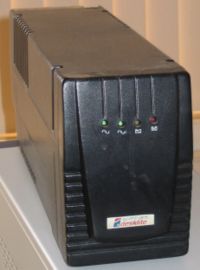
Photo from wikipedia
Abstract Waste heat recovery in high temperature industries such as cement factory has undeniable benefits. In this study, an annular panel is considered as the thermal absorber around the external… Click to show full abstract
Abstract Waste heat recovery in high temperature industries such as cement factory has undeniable benefits. In this study, an annular panel is considered as the thermal absorber around the external surface of the kiln at the location with highest surface temperature along kiln. By using a comprehensive numerical simulation, the temperature on the absorber is obtained and utilized as the hot side boundary condition of thermoelectric generator (TEG) system. For efficient design of the thermoelectric unit on outer surface of the absorber, effect of critical parameters such as thermoelectric leg length and fill factor are studied. Two different thermoelectric materials, bismuth telluride (Bi2Te3) and β-phase zinc antimonide (Zn4Sb3), efficient over different ranges of temperature are considered in order to evaluate electrical power output and performance of the system. Matched power output and conversion efficiency of the system are investigated. A double-objective optimization is carried out to minimize cost per power. The results show, the optimum leg length obtained by analysing cost per power ratio is shorter than the leg length corresponding to the maximum peak power output at a fixed fill factor. Zn4Sb3 shows higher conversion efficiency at maximum peak power output than Bi2Te3, except for fill factor of 0.01.
Journal Title: Energy
Year Published: 2019
Link to full text (if available)
Share on Social Media: Sign Up to like & get
recommendations!